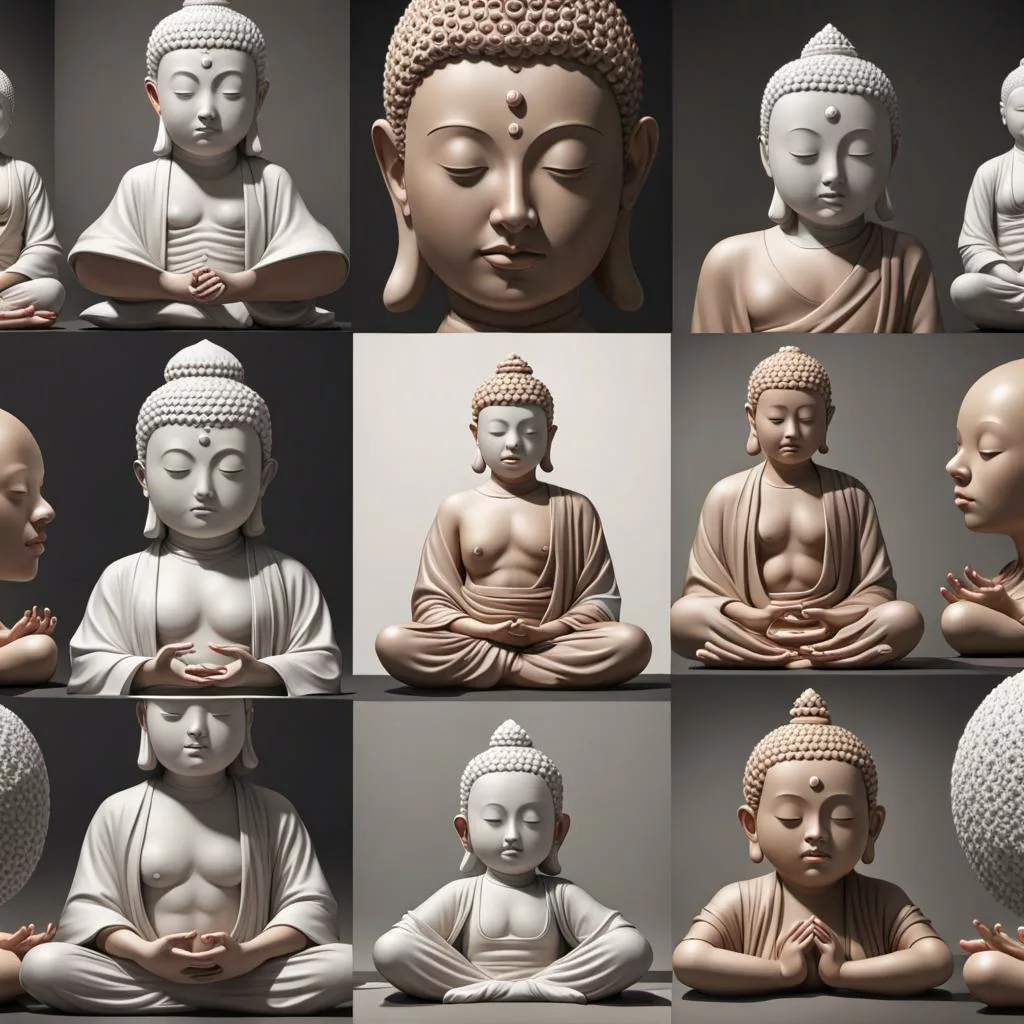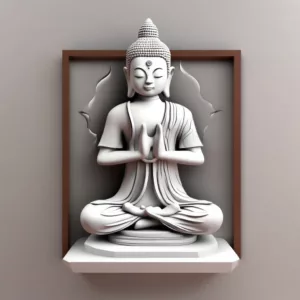
These 24 types of meditation can be categorized into a few sections: spiritual meditation, health meditation, movement meditation, self-improvement, and visualization / mantra.
Table of Contents
Types of Meditation Graph
Types of Meditation Graph
Meditation (Practice)
| |
Focused Attention Movement Meditation
| |
Mantra Meditation (Subtypes)
| |
Breath Focus Tai Chi Meditation
| |
Body Scan Qigong Meditation
| |
Walking Meditation
Mindfulness Meditation (Independent Type)
Spiritual Meditation (Independent Type)
|
Loving-Kindness Meditation
Visualization Meditation (Independent Type)
Progressive Muscle Relaxation (Independent Technique)
Transcendental Meditation (TM) (Specific Type with Teacher)
Other Techniques:
- Breathwork
- Guided Meditation
- Visualization
- Mantra Recitation
Explanation:
- Central Term: Meditation (Practice)
- Connected Nodes: Different types of meditation
- Focused Attention & Movement Meditation: These are two main branches with subtypes.
- Focused Attention: Includes Mantra Meditation and Breath Focus meditation (focusing on the breath as the object of attention).
- Movement Meditation: Includes Tai Chi, Qigong, and Walking Meditation (all involve mindful movement).
- Mindfulness Meditation: This is a separate type not directly connected to the above branches, although it shares some techniques.
- Spiritual Meditation: Another independent type, often used for religious purposes or spiritual connection.
- Loving-Kindness Meditation: A subtype of Spiritual Meditation focused on cultivating kindness and compassion.
- Visualization Meditation: Another independent type using mental imagery.
- Focused Attention & Movement Meditation: These are two main branches with subtypes.
- Leaf Nodes: Techniques used in some meditation practices (can be used in various types).
Note: This is not an exhaustive list of all meditation types or techniques.
Types of Meditation Table
| Types of Meditation | Description |
|---|---|
| Mindfulness Meditation | The most common type of meditation, focusing your attention on the present moment without judgment. You can focus on your breath, your body sensations, or your thoughts and emotions. |
| Focused Attention Meditation | This type of meditation involves focusing your attention on a single object, such as a candle flame, a mantra, or your breath. Whenever your mind wanders, you gently bring your attention back to the object of focus. |
| Movement Meditation | This type of meditation involves moving your body in a mindful way. Examples of movement meditation include tai chi, qigong, and walking meditation. |
| Tai Chi Meditation | A sub-type of movement meditation, tai chi is a gentle form of exercise that combines slow, flowing movements with deep breathing. |
| Qigong Meditation | Another subtype of movement meditation, qigong is a Chinese system of exercise that combines physical postures, breathing exercises, and meditation. |
| Walking Meditation | A type of movement meditation that involves focusing your attention on the sensations of walking. It can be a helpful way to become more mindful of your body and surroundings. |
| Mantra Meditation | This type of meditation involves silently repeating a mantra, which is a word or phrase that can help to focus your attention and quiet your mind. |
| Spiritual Meditation | This type of meditation is used in many religions and spiritual traditions. It is often used to develop a deeper connection with a higher power or to cultivate spiritual understanding. |
| Loving-Kindness Meditation | Also known as metta meditation, this type of meditation involves cultivating feelings of love, kindness, and compassion for yourself and others. |
| Visualization Meditation | This type of meditation involves creating mental images of what you want to achieve or experience. It can be used for relaxation, goal setting, or healing. |
| Progressive Muscle Relaxation | This is a technique that involves tensing and relaxing different muscle groups in your body. It can be helpful for reducing stress and tension. |
| Transcendental Meditation (TM) | A specific type of meditation that involves silently repeating a mantra. TM is taught by a certified TM teacher. |
| Body Scan Meditation | This type of meditation involves focusing your attention on different parts of your body, one at a time. It can be helpful for relaxation and body awareness. |
| Sound Meditation | This type of meditation involves focusing your attention on sounds, such as singing bowls, chimes, or nature sounds. It can be helpful for relaxation and stress reduction. |
| Chanting Meditation | This type of meditation involves chanting mantras or religious texts. It can be a helpful way to connect with a higher power or to cultivate a sense of community. |
| Affirmation Meditation | This type of meditation involves repeating positive affirmations to yourself. It can be helpful for boosting self-esteem and improving mood. |
| Yoga Nidra | A form of guided meditation that involves lying down in a comfortable position and focusing your attention on your breath and body sensations. It can be helpful for relaxation and sleep. |
Secrets of Meditation for Anxiety
Like millions of people, you may have suffered from anxiety for years. Meditation, yoga, peaceful music – it never works. It takes too long, and it’s not stable. Why? Because peace is treated as a cause for freedom, but it’s not – it’s the result. The cause to free yourself from anxiety is completely different.
Click now to Overcome Anxiety for good.
Types of Meditation
Transcendental Meditation (TM)
Transcendental Meditation (TM) is a specific type of meditation that stands out for its unique technique and instruction method. Here’s a closer look at TM:
- Mantra Repetition: At the core of TM lies the silent repetition of a mantra, a special Sanskrit word or sound assigned to you by a certified TM teacher. Unlike focused attention meditation, the goal isn’t to concentrate on the mantra itself but to transcend thought and enter a state of deep rest called “pure consciousness.”
- Teacher Training: TM is learned through a standardized course led by a certified TM teacher. This personalized instruction ensures you understand the proper technique and can address any questions that arise during the learning process.
- Benefits: Proponents of TM claim various benefits, including reduced stress and anxiety, improved focus and concentration, and enhanced creativity. Research also suggests potential benefits for blood pressure regulation and overall well-being.
- Time Commitment: TM practice typically involves meditating twice daily for 15-20 minutes each time.
Mindfulness Meditation
Mindfulness meditation is the most common type of meditation, and it involves focusing your attention on the present moment without judgment. You can focus on your breath, your body sensations, or your thoughts and emotions.
Focused Attention Meditation
This type of meditation involves focusing your attention on a single object, such as a candle flame, a mantra, or your breath. Whenever your mind wanders, you gently bring your attention back to the object of focus.
Movement Meditation
This type of meditation involves moving your body in a mindful way. Examples of movement meditation include tai chi, qigong, and walking meditation.
Tai Chi Meditation
A sub-type of movement meditation, tai chi is a gentle form of exercise that combines slow, flowing movements with deep breathing.
Qigong Meditation
Another subtype of movement meditation, qigong is a Chinese system of exercise that combines physical postures, breathing exercises, and meditation.
Walking Meditation
A type of movement meditation that involves focusing your attention on the sensations of walking. It can be a helpful way to become more mindful of your body and surroundings.
Mantra Meditation
This type of meditation involves silently repeating a mantra, which is a word or phrase that can help to focus your attention and quiet your mind.
Spiritual Meditation
This type of meditation is used in many religions and spiritual traditions. It is often used to develop a deeper connection with a higher power or to cultivate spiritual understanding.
Loving-Kindness Meditation
Also known as metta meditation, this type of meditation involves cultivating feelings of love, kindness, and compassion for yourself and others.
Visualization Meditation
This type of meditation involves creating mental images of what you want to achieve or experience. It can be used for relaxation, goal setting, or healing.
Body Scan Meditation
This type of meditation involves focusing your attention on different parts of your body, one at a time. It can be helpful for relaxation and body awareness.
Progressive Muscle Relaxation
This is a technique that involves tensing and relaxing different muscle groups in your body. It can help reduce stress and tension. It’s a subtype of Body Scan.
Sound Meditation
This type of meditation involves focusing your attention on sounds, such as singing bowls, chimes, or nature sounds. It can be helpful for relaxation and stress reduction.
Chanting Meditation
This type of meditation involves chanting mantras or religious texts. It can be a helpful way to connect with a higher power or to cultivate a sense of community.
Affirmation Meditation
This type of meditation involves repeating positive affirmations to yourself. It can be helpful for boosting self-esteem and improving mood.
Yoga Nidra
A form of guided meditation that involves lying down in a comfortable position and focusing your attention on your breath and body sensations. It can be helpful for relaxation and sleep.

May all beings be happy
May all beings be peaceful
May all beings be safe
May all beings awaken to the light of their true nature
May all beings be free








